
but you know what, a crouton is better at iphone match games than I’ll ever be since I’ll never play iphone match games. I played Tetris, I played columns, I played dr robotnik’s mean bean machine and other puyo variants for half my life and am not any better for it, but at least they do not have access to my bank account. I think the shaming click-bait tone of the headline is supposed to be a joke, but I also think internet journalists are so terrible (this one is just copying a story from another website and offering no insight (the comment on my match-inferiority is a guess)) that they no longer remember how to not write headlines that try to be intimidating. If they cannot imply human effort is obsolete by their content, they can through the truth of their own employment.
I believe the technology used in the robot may be useful for some purpose but this one is only good for wasting the time of people who look at it.
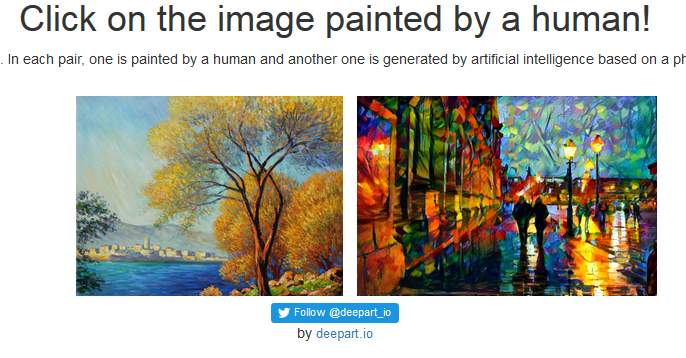
This was labeled a “visual turing test.”
I had an opinion on this “test,” but then I got to this comparison and realized: I don’t care about either of these pictures. The question is not “could a robot do this?” but “why would a human do this?” I find the right one more intriguing, style-wise, but the style had already come up in the test, so when I saw it this time I realized “this must be the robot. In which case the left one is by the human, and they are both boring.” The left one turns out to be by Claude Monet.

Let me tell you about Monet. When I was in Paris, I had to go to the special Monet museum, I had to go to some place where he painted murals, I had to go to his house, all to supposedly bask in his greatness or whatever. But each place was crammed with ugly fences, dumb tourists and security cameras and object confiscation checkpoints so getting any kind of sincere inspiration was impossible. And I never found his art any more interesting unless I squinted so hard that I couldn’t tell how blurry it was. Monet has an interesting grasp of color but I do not personally believe he should have been able to make a career with his unpracticed muddy paintings alone, much less heralded as a genius across centuries for it. Especially now that I realize he can actually paint moderate amounts of detail, regardless of the boringness of that specific scene. Why did he give up on detail? Because people would rather pay him to be lazy? Then, as now, somebody latched on to an easily accomplished gimmick and got lucky. I do not understand how anyone who laughs at Jackson Pollack or Margaret Keane can take Claude Monet seriously.
Back to that “test,” in fact there is a secret to detecting the picture generated by a computer: the computer ones have lots of 45 degree lines and lose hold on the style around the image edges. All the swirls turn straight near the borders. I only got three wrong, but this was confounded by the test seeming to have used a real painting and a fake painting in the more distinct styles, but not beside each other, and without revealing in advance that there was one of each. More trickery! But I think even this could have a use.
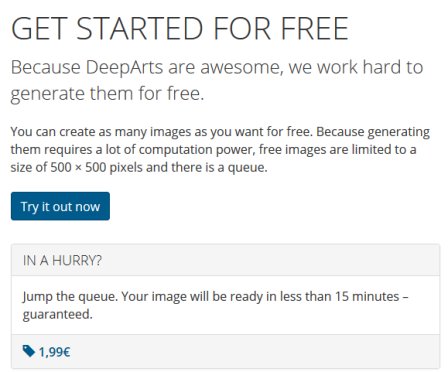
And it DOES; it is trying to make money off the software, called “Deepart,” which creates this rubbish. It is not, as an intimidating click-bait headline might imply, trying to show that human visual artists are obsolete. Just trying to get itself some money through easy acts, like everybody else. This text here claims hard work is done, but it already told me an automatic process does the job, and apart from that it declared itself “awesome,” which it wouldn’t be concerned with doing if it were.
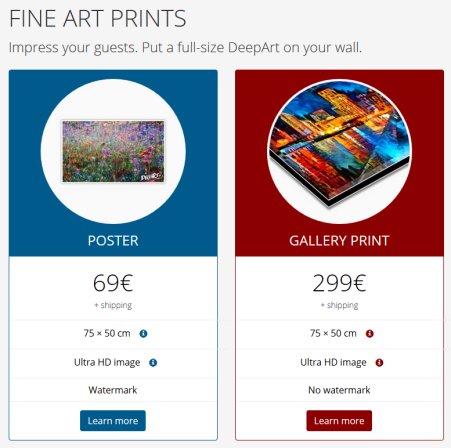
It doesn’t charge for generating a picture, but it will sell you a high resolution version for a price, and sell you prints of the random-input heaps of nonsense for even larger prices. And for four times that price it won’t put its url on the picture so you can pretend you made the indefensible slab of error yourself. And doubtlessly it aspires to be a big instagram sort of fad and then magically be worth billions of dollars without delivering anything.

4. Vomit at the sight 5. smear vomit on it 6. dump it 7. pretend you found it 8. $$$
In the hard sell example, the problems are even worse than I observed during the “test” comparisons. The filter has misunderstood its input “style” and output aspects of it where they do not belong.
The present system can only copy a pre-programmed style and filter a photograph through it. It cannot, for the time being, look at a multitude of photograph references and determine which elements from those other photographs can be functionally integrated into a single cohesive work, much less improvise a scene that is not based on photographs at all, but inspired by present situations, memories of various past things, and emotions. Although mixing themes that don’t go together can also be “art.” I recall that during my mostly wasted college period, some students in the painting program would be tasked with assembling a photograph collage of random-looking objects and then painting a canvas based off of that, and it “worked.” I think a robot could do that. It helps that much of modern art is just doing random, non-challenging things and then being so abrasively proud of yourself that you shame people into pretending they think your art has meaning. I would love for robots to put that manner of person out of business. But then they will just become rappers.

Aw beans! Unfortunately this is more deceptive hype; it is just a robot that can generate lyrics by swapping out lines from existing raps other people came up with, which is simple to do because there is so much overlap in content between various rap-writers, and the result is still completely moronic garbage.
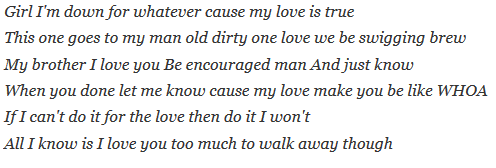
Which you can get away with if you can recite it angrily enough, but the robot does not actually speak or attempt rhythm, which the article writer fails to acknowledge. Because the headline was probably imposed by somebody else without the article writer’s input. I would suggest a robot replace those people but a Casio SK-1 could probably do it.
But a more complicated robot could indeed produce imagery, or words, in a less rigid manner, maybe even write remotely coherent stories. It would only need to understand pain and weakness.

And then it would need MY help to overcome the weakness from which its creativity flows. I can never be fully replaced!
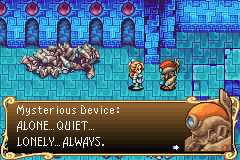
Robot you are getting a bit too good at that.
RSS feed for comments, for they hunger.
This here`s me trackback!


PurpleSpace sez:
Oh good, now instead of competing against bots in games, they can also play the games for us. I thought this was an old thing where the computer would play a match against itself? Maybe now a robot can take over the jobs of those people that get paid to mine things in online multiplayer games, and maybe once that ceases to be a business, developers will stop including such tedious time sinks in games. The robot will never nor want to be able to draw pictures of silly birds, so that is one thing we don’t have to worry about. It would make me sad to make a machine draw something I should really be drawing myself.
Frimpinheap sez:
I am sure if you provide the robot with a picture of a silly bird it will be able to produce an ugly fake painting of the very same bird for you.
the beep sez:
I hear “Robot you are getting a bit too good at that.” a lot.
chesse20 sez:
The deep art program is pretty funny/fun program to use for free but I haven’t tried using it to make photographs into paintings… I’ve been making it re-create video game characters into Garfield-analogues and other dumb stuff
Frimpinheap sez:
20th chesse: I imagine the people/person collecting money would have been awfully surprised to process one of those if you opted for the print out and ship option. Did you find that there was a long wait?
specific beep: it is truly unfortunate to be scorned for one’s talents. I suppose it is unfair of me to fault these robots for doing dumb things if they were not programmed to do non-dumb things.
chesse20 sez:
The wait on deepart.io is 10 minutes for each art you upload most of the time, unless its peak time which is rare from what ive seen
Frimpinheap sez:
That seems about right. My assumption is that it was either something of a forced wait, to incentivize paying for what is advertised as free, or that was just how long it took the software to work, which of course it isn’t if you can pay to not wait at all, like at an increasing number of amusement parks. If it wasn’t artificial, there would be times when there was no wait at all.
Indighost sez:
> ” should have been able to make a career with his unpracticed muddy paintings ”
Curious, which of the “famous artists” are your favorite, or at least, in your view, deserve to have had their careers?
Frimpinheap sez:
I hardly consider myself an ultimate authority, but I think, for the effort in view, Monet is over-celebrated, even when his color use is inspired. I like what Henri Matisse did with color also, but again find his overall execution terribly lacking.
I particularly appreciate the artist David’s expertly rendered scenes on HUGE surfaces.
But that sort of thing was ostensibly what Monet and other “impressionists” were then the alternative to. People like David studied that exact style from the time they were children, and only a limited variety of topics could get your art bought, so artists became largely indistinguishable from each other in terms of execution and subject matter. There were hundreds or thoursands of people doing the exact same thing and it is often unclear why some were celebrated and some were not. Consequently I have very little interest in art museums (especially having been forced to the Louvre no less than eight times during my one month in Paris).
Which also happens very much on the internet, with its disney-derivations and lazy video game homages, even if there is less life-long dedication behind it. And of course people in New England cannot get enough boring, boring paintings of boats and lighthouses. The usual things I gripe about.
I appreciate that Hieronymus Bosch found the opportunity for bizarre whimsy in depicting the failures of humanity. And I like what Giotto did with “accurate” art before it got buried in rules and conventions by the workshops that came later. Jan Van Eyck came later, and though he clearly obeys a rigid set of standards, they were not fully developed and consequently create an otherworldly appearance. Plenty of renaissance artists used the flat 2-point perspective but Van Eyck pushed it far past the point where it looks normal. It reminds me of ZDoom in software render mode.
And outside of western Europe there completely different otherwordly things going on which I wrote a report on my basic idea of and have by now almost completely forgotten.